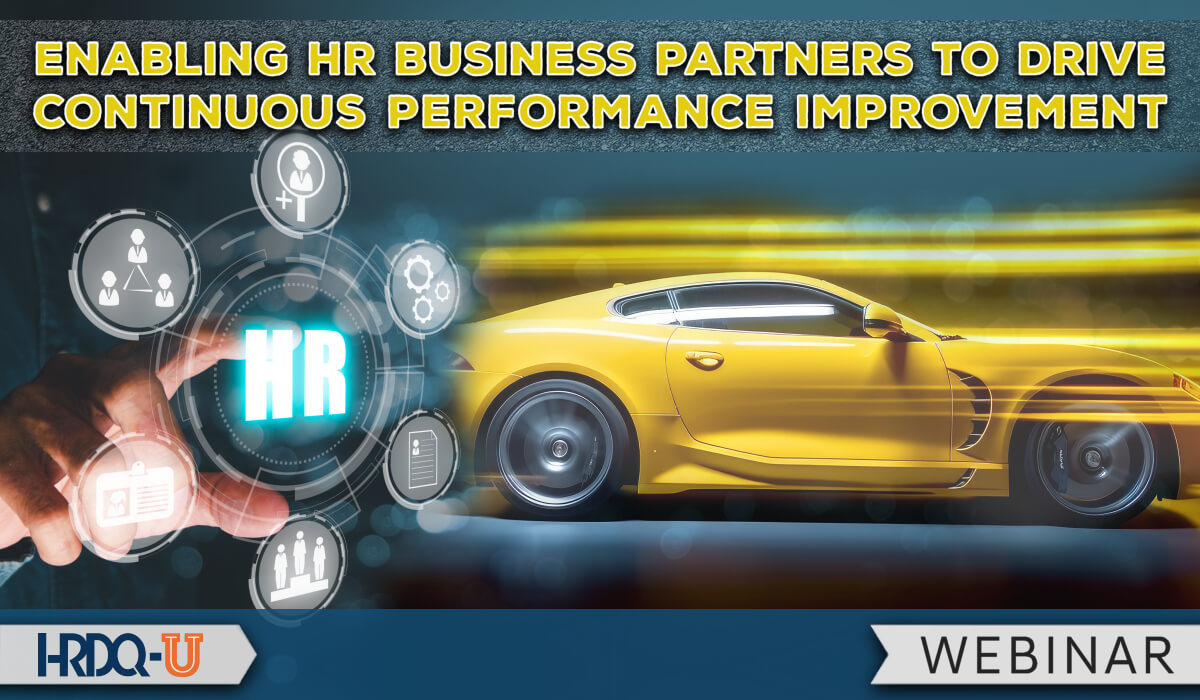- 827 Lincoln Ave. #B-10 West Chester, PA 19380
- support@hrdq.com
- +1-610-279-2002
Quick Links
Menu
Featured Topics
Menu
Total Results
We could not find what you're looking for. Please try again.No Record Found

The discipline of Human Performance Improvement (HPI) has evolved since the 1970s to become an important contributor to training, talent management, process and quality improvement, sales enablement, and other functions in companies and not-for-profit organizations. Both the International Society for Performance Improvement (ISPI) and the Association for talent Development (ATD), as well as some training companies, offer certifications in performance improvement. Countless books, chapters, and journal articles have emerged as the field has evolved.
The Performance Thinking® methodology and models have developed since the late 1980s to make the underlying methods and logic of Performance Improvement and behavior science accessible to as broad a range of users as possible. Its simple models and plain English terminology are easy for anyone to understand and apply. Organizations in industries such as biotech, computer hardware and software, insurance, behavioral health, pharmaceuticals, medical devices, banking, social media, and education have adopted Performance Thinking models and programs to extend the reach and impact of their learning and performance departments, organizational development specialists, process improvement teams, talent development groups, managers as coaches, and executive leaders.
A new opportunity for driving performance improvement in organizations is to enable Human Resource Business Partners to help the managers and executives whom they serve to continuously improve the performance of their teams, departments, and business units. Because HR Business Partners are usually spread thin across the clients and challenges they serve, they are not well-situated to take on the types of large projects that training, process, and OD professionals often conduct. Instead, they must be able to simultaneously address a wider range of challenges and opportunities for which their clients need solutions, including both day-to-day issues and larger scope issues. They can help their clients re-define jobs, document ill-defined processes, coach team members for improved productivity, figure out how to measure specific performance, create Employee Engagement Plans, improve working relationships, create succession planning for key roles, and so on. While we cannot usually expect HR Business Partners to devote their time to managing major projects, their roles as advisors to senior managers and executives could allow them to be agents of performance improvement. Most existing programs for supporting and developing HR Business Partners focus either on HR topics and methods or on business-related topics, not explicitly on methods for improving employee productivity and engagement.
This webinar introduces elements of the performance improvement methodology known as Performance Thinking. It summarizes an analysis completed in several organizations of the contributions that HR Business Partners and Senior HR Business Partners make in their work with senior managers and executives. And it describes a modular Performance Thinking® curriculum that can be adapted for HR Business Partners based on the particular priorities and applications they engage in their organizations. Such an approach can empower HR Business Partners to be agents of continuous performance improvement partnering with stakeholders.


Special Discounts from SixBoxes
Webinar attendees qualify for a discounted rate on the three most popular Performance Thinking®️ programs and services: Performance Thinking®️ for HR Business Partners, Executive Coaching with Performance Thinking, and The Open Performance Thinking®️ Practitioner Program.
To take advantage of these discounts, please contact Six Boxes here, use the code HRDQU23 in your message, and state what program interests you.
Dr. Carl Binder, CEO of The Performance Thinking Network, began as a behavior scientist – one of B.F. Skinner’s last graduate students at Harvard. He spent the 1970s conducting research, training teachers, and consulting with educational and human service organizations across North America with a focus on fluency-based instruction. Shifting to corporate training in 1982, he joined the International Society for Performance Improvement where he met Tom Gilbert, Geary Rummler, Joe Harless, Roger Kaufman, and other performance improvement pioneers, who proved to be generous mentors. Founder of 4 consulting firms, he has continued to refine performance improvement models and methods, partnering with clients and stakeholders, developing performance consultants, and teaching leaders and managers to contribute to continuous improvement.
For over 40+ years, Carl has developed what is known as Performance Thinking®, a powerful but flexible accomplishment-based performance improvement methodology that his firm certifies others to apply in programs for different organizational roles. Adopted by clients on six continents, Performance Thinking has built a global community of practice. Carl has published several dozen articles and chapters, spoken at events worldwide, and received four Lifetime Achievement awards from the American Psychological Association, The International Society for Performance Improvement, the OBM Network, and the Standard Celeration Society.
The Performance Thinking Network helps leaders, managers, and performance professionals to accelerate business results through the performance of their people. We combine the research-based Performance Chain model for analyzing the elements of human performance, with the Six Boxes® Model, voted “the best performance model in the world” by participants at the 2022 conference of the International Society for Performance Improvement, to teach a “logic” of performance improvement that can be applied across levels and functions in any organization.
Learn more at The Performance Thinking Network
Training Tools for Developing Great People Skills
This event is sponsored by HRDQ. For 45 years HRDQ has provided research-based, off-the-shelf soft-skills training resources for classroom, virtual, and online training. From assessments and workshops to experiential hands-on games, HRDQ helps organizations improve performance, increase job satisfaction, and more.
Learn more at HRDQstore.com

Sign up to be notified of upcoming live webinars, in-depth workshops, podcasts, blog posts, promotions and much more. Stay ahead of the curve and subscribe for FREE today!